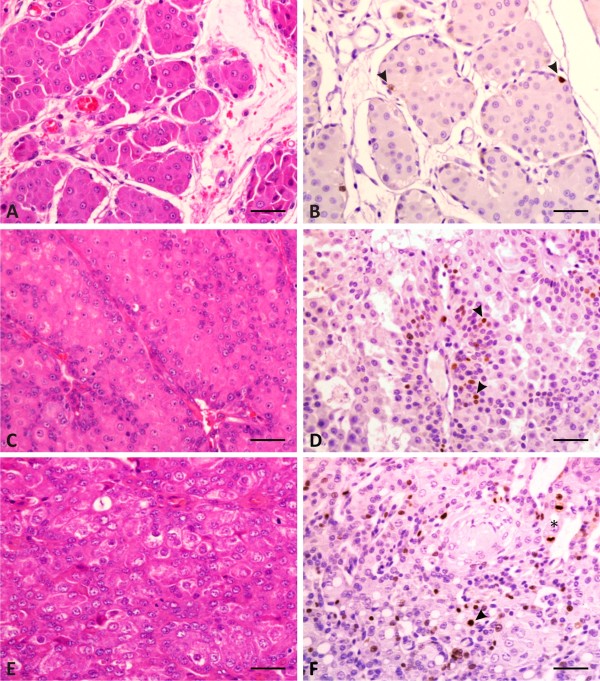Figure 2.
Histopathological and immunohistochemical aspects of canine perianal gland neoplasms. A-B: Perianal gland adenoma. Note the polyhedral cells grouped in nests and surrounded by a small amount of fibrous connective tissue (A) and the presence of rare Ki-67-positive nuclei (B) (arrowhead). C-D: Perianal gland epithelioma. Observe cells organized in nests with a thick basal layer (C) and with marked mitotic activity, evidenced by the Ki-67-positive staining (D) (arrowhead). E-F: Perianal gland carcinoma. Note the proliferation of polymorphic polyhedral cells organized in a solid pattern, with moderate anisokaryosis and anisocytosis (E), diffuse Ki-67-positive nuclear staining (arrowhead), and the presence of mitosis (*) (F). A, C, E: Hematoxylin and Eosin. B, D, F: Streptavidin-biotin peroxidase complex. Scale bar = 50 μm.

